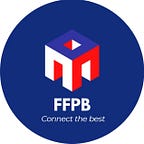Everybody can admit that few technologies have attracted more craze and controversy than the blockchain. The past few years have shown that this craze has strong roots. The blockchain technologies have been really transformative and booming with new trends and inventions. The blockchain has already penetrated many industries, and it will continue to modify more industries in the future. Expenditures for blockchain solutions by businesses are forecasted to hit 11.7 billion dollars during 2022. With this in mind we are going to highlight the major blockchain trends of the year.
New third and fourth generations of blockchain solutions
We skip the first two generations and discuss the current option and upcoming tendency. Today we observe the third blockchain generation, while the fourth stage is yet to come globally.
The blockchain 3.0 is mainly associated with the rise of decentralised applications (dApps). The main focus of the blockchain 3.0 is the Proof of Stake (PoS), which takes care of speed, security, scalability, standardisation, interoperability, and environment. Energy saving is one of the major topics to be solved. The fourth generation shall be more profound and flexible in comparison to the current version.
Towards more blockchain standardisation and interoperability
Standardisation and interoperability are of extreme importance in the blockchain world. The ability to transfer information across a number of blockchain systems and networks is known as blockchain interoperability. In other words, blockchain interoperability is the communication mechanism between two or more blockchains.
This feature allows the users to easily view and access data across a lot of blockchain networks. For example, a person can transfer data from one Ethereum blockchain network to other Ethereum-based networks.
Blockchain-as-a-service solutions
Recently we have seen the rise of blockchain-as-a-service (BaaS). It is a new blockchain trend that has already been adopted by a certain number of companies and businesses.
BaaS is a cloud-based solution that allows customers to collaborate with blockchain and create their digital products, such as smart contracts, decentralized applications, and other services that don’t require the whole blockchain infrastructure to function. With the help of the technology it will be possible to create independent and decentralised objects and architectures.
A project can be implemented through specially created cloud platforms. Thus, innovations are quickly introduced into our everyday life and are actively developing. Today many cloud companies provide BaaS options. Thereby they are influencing the future of blockchain applications.
Exaion is one of the advanced companies that maintains eco-responsibility and drives BaaS solutions. There are four major aspects that are taken into consideration. They are security, sovereignty, ecology, and decentralisation.
Blockchain, internet of things, and 5G
The next trend is the internet of things (IoT). What does this term mean?
There are a few examples: wearable health monitors, shipping container and logistics tracking, biometric cyber security scanners, and wireless inventory trackers. Internet of things basically entails connecting any digital device that has access to the internet to another device without requiring human to computer or human to human interaction. The purpose of this connection is to transfer data.
Other real world examples of IoT are wearable fitness trackers like Fitbit, voice assistants like Siri and Alexa, smart cars like Tesla, and smart appliances like iRobot. IoT is rapidly becoming popular and IoT devices will be unavoidable soon.
Blockchain is an excellent solution for IoTs because it enables machine interactions and transactions within security, scalability, and micropayments between machine networks. 5G networks are finally here to provide excellent connectivity between all kinds of smart network equipment and appliances. The rollout will inevitably lead us down the road for innovation in this field which is driven by blockchain transactions.
Blockchain and the Metaverse
Facebook’s rebranding to Meta was one of the tech sector’s biggest stories of 2021 and it has already had big repercussions for crypto. A number of pre-existing blockchain-based metaverse platforms has already grown as a result of Facebook’s pivot. 2022 will bring a range of new Metaverses.
Many of these will come from pre-existing mainstream tech and media companies such as renowned Microsoft, Tencent, Roblox, and Disney. A big portion of them is likely to incorporate NFTs and potentially other kinds of cryptocurrencies. At the same time a related concept known as Web 3.0 is also likely to emerge into the limelight in 2022.
The current state of the internet is highly centralised with most of the internet’s traffic flowing through a few large companies. Web 3.0 refers to a more interactive and decentralised form of the internet in which users have more of a stake and role.
The potential of using cryptocurrencies and decentralised autonomous organisations is to make ownership of websites and web-based assets more democratic. Given that Web 3.0 applications will operate on a decentralised framework, the blockchain will provide foundational building blocks that will be the basic tooling in the creation of Web 3.0.
